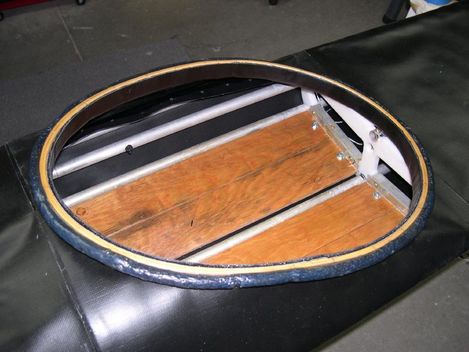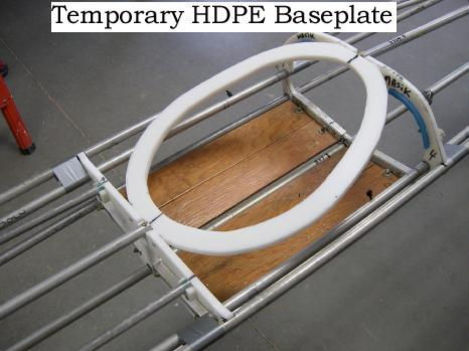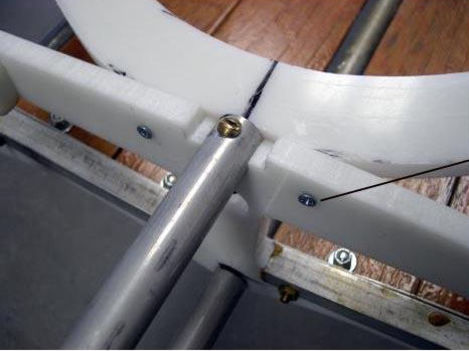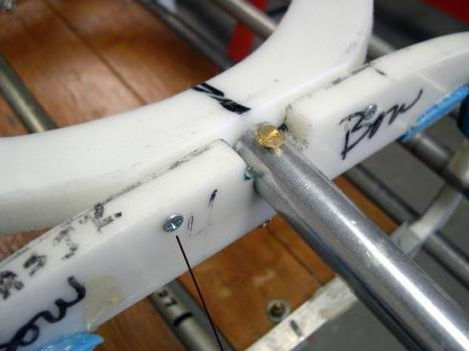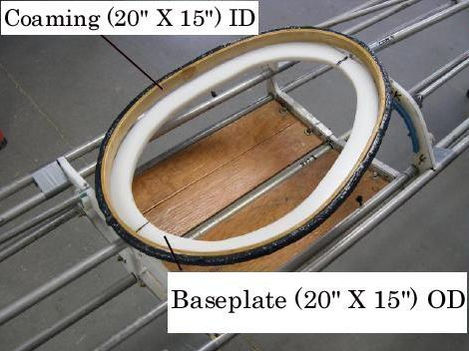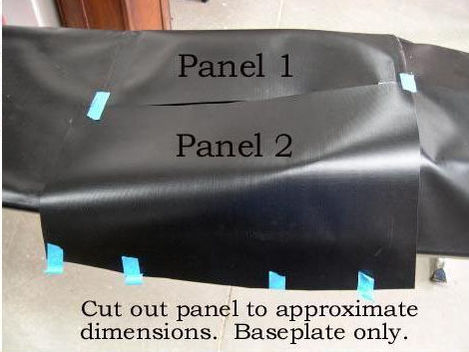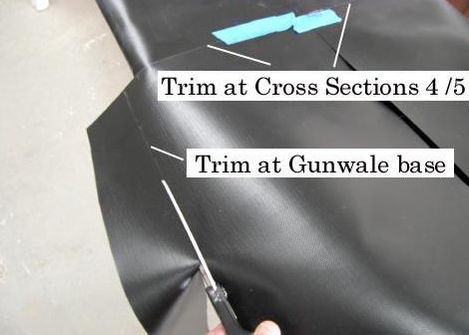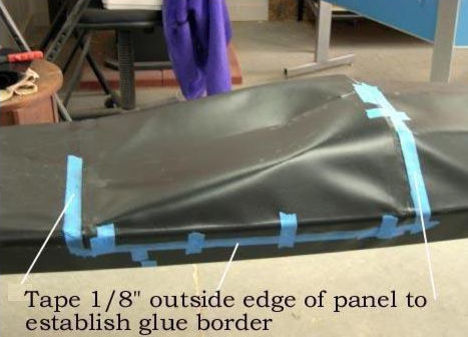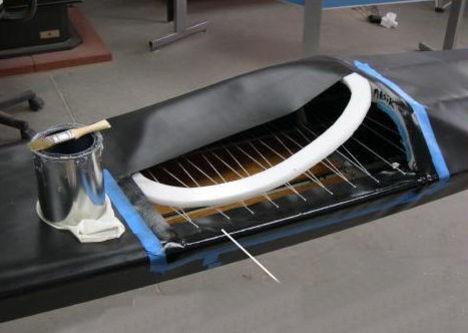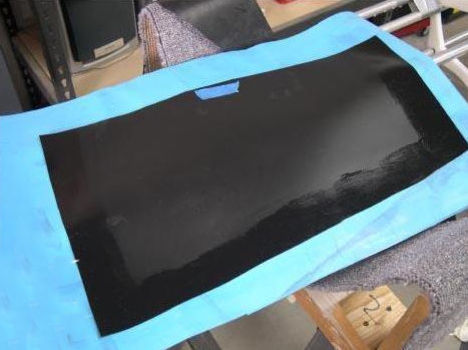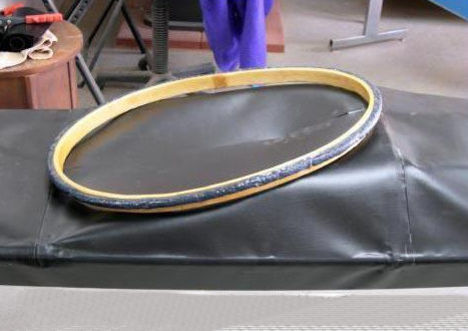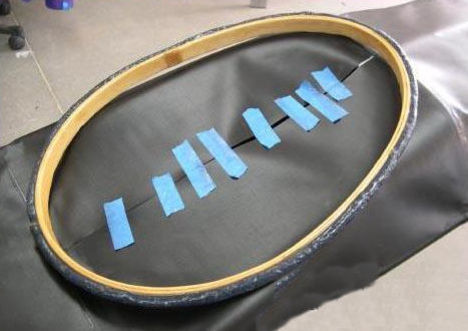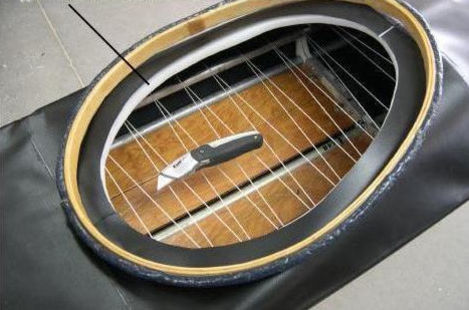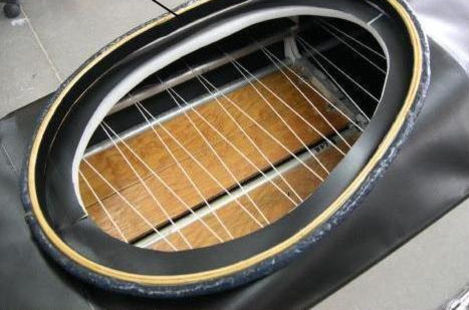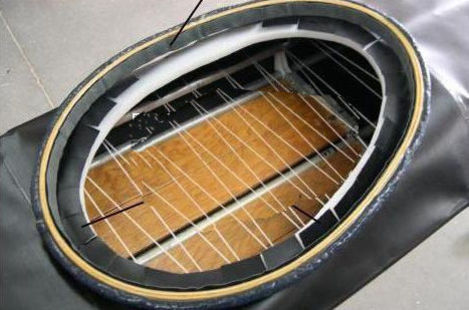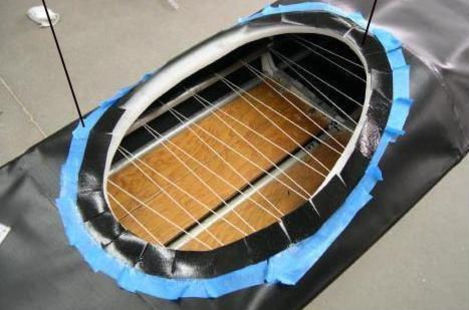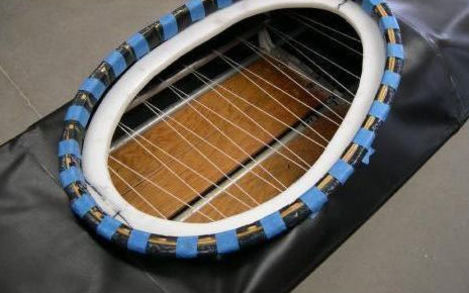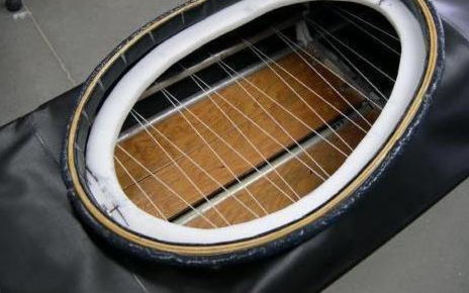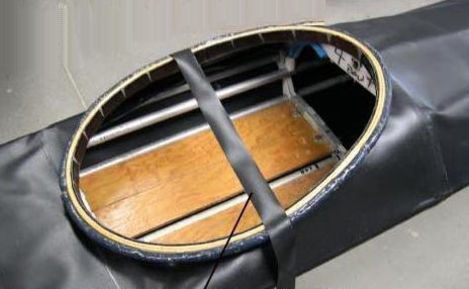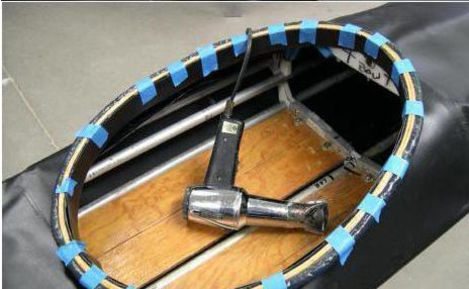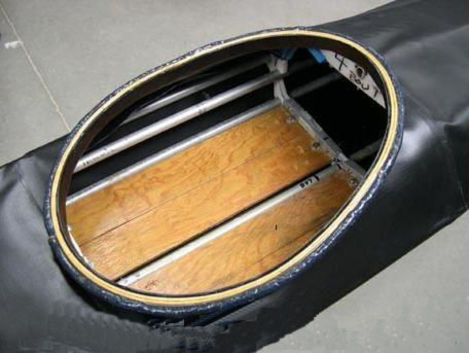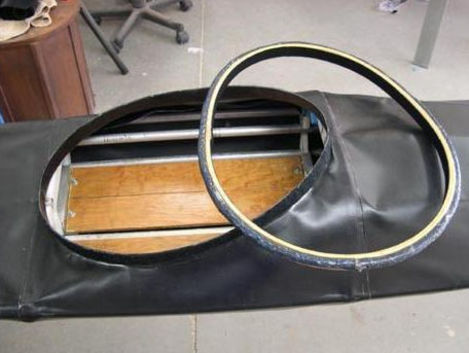Boat Building - PVC Skin
Attaching
All kinds of coamings - wood and fiberglass - can be attached with Velcro on the inside edge of the coaming. The inside Velcro connection is more watertight than the foam seal used with the HDPE coaming / baseplate. This also allows use of the coaming without a base plate, though a temporary base plate is used for construction only.
Due to it's narrow profile, the wood coaming is free standing and uses
no machine screw connections as are used with the HDPE and fiberglass
coamings. With it's wider profile, the fiberglass coaming can be
connected to cross sections 4 and 5 with stainless steel machine screws.
The use of machine screw attachments allow more rigidity along the
deckridge.
Free Standing Wood Coaming
The freestanding wood coaming was designed and built by Mark Molina.
The result: Freestanding wood coaming as designed by Mark Molina
The temporary base plate fits flush with the top of cross section 4 and 5.
It allows a smooth transition between the PVC skin and the coaming during construction work.
It is held in place with screws, and it is removed after the coaming is atttached.
Baseplate with prebuilt wooden coaming
Cut out panel to approximate dimensions with underlying baseplate only
Trim deck skin at cross sesctions 4 and 5 and at gunwales
Tape 1/8" outside of edge of baseplate to establish glue border
Apply 2 - 3 coats of Vinyl glue to the PVC skin
Apply 2 - 3 coats of Vinyl glue to the coaming panel
Use a heat gun and apply hand pressure to glue the PVC parts together
Tape the two coaming panels together before cutting the opening
Use a sharp knife to cut the PVC Skin along the inside edge of the baseplate (temporary coaming)
Important change of the method shown below
This is a change from the earlier method as shown here of
gluing adhesive backed Velcro directly to the PVC panels.
Gluing
self-adhesive Velcro to the coaming (wood or fiberglass) or to PVC has
not shown long term durability.
And this is how it must be done
Glue non-adhesive Velcro (hook) to
the inside coaming using thickened epoxy resin or epoxy glue. As an
quick alternative, 5-minute epoxy can be used.
Sew the The Velcro (loop) to a 1.25in strip of PVC before glueing to
the 2" wide PVC panels.
Glue 1" wide Velcro (hook side) to the inside of the coaming
Attach 1" wide Velcro (loop side) to the Velcro hook section.
Cut slits in PVC about every 2".
Mask glueing areas and apply 2 - 3 coats of Vinyl glue
After the glue dried, tape the 2" PVC sections to Velcro
Glue sides together with heat and pressure
Remove the temporary baseplate
Cut a 1.25" wide strip of PVC to cover and waterproof the inside of the coaming
Apply 2 - 3 coats of Vinyl glue to the inside of the coaming
The result - mounted
Freestanding wood coaming - dismounted



